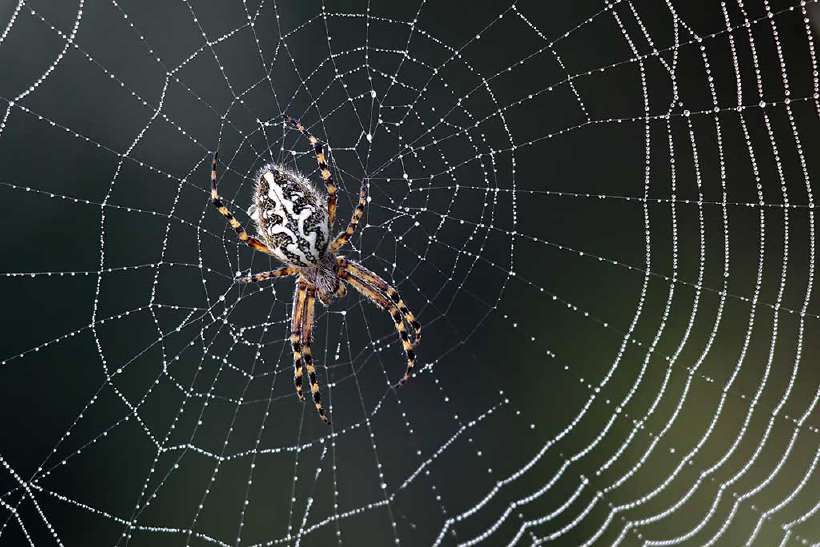Why Don't Spiders Get Caught in Their Webs?
Home / Science for Kids / 5Ws & H For Kids / Why Don't Spiders Get Caught in Their Webs?
Spiders are not insects but are classified by biologists as arachnids. Arachnids are different from insects as they have eight legs and no antennae. There are over 40,000 species of spiders and some of them build webs while others rely on speed to catch their prey.
A spider building its web is extremely fascinating to watch. Some spin these webs by squirting silken threads from modified excretory glands in their body. Each silk gland (some species have up to five) produces a different type of silk. Some silk glands produce a liquid silk that becomes dry outside the body; while other glands produce a sticky silk that stays sticky.
Inside the spider’s abdomen are small organs called spinnerets that secrete the silk. A spider can stretch out each spinneret, pull it back in, and even squeeze them all together. Using different spinnerets, a spider can combine silk from different silk glands and produce a very thin thread or a thick, wide band.
Not all parts of the web are sticky. A spider can control how much stickiness it needs to cover the web. Often the first strand is coated with a heavy layer of gum. This is carried in the breeze and sticks to a distant wall or branch.

Next the spider weaves the outer spokes of the web and spirals inwards with dry silk. Finally it follows the outer layer eating some strands and replacing them with stiky silk.
Some species (such as the water spider) use it to build underwater nests, while others make draglines to ride, using the wind to travel great distances. (Wherever a spider goes, it spins a silk thread behind itself. This thread is called a dragline).
The dragline is also called a ‘lifeline’ because the spider often uses it to escape from enemies. If danger threatens a spider in its web, it can drop from the web on its dragline and hide in the grass. Then it climbs back up the dragline into its web. Strangely enough, baby spiders are not taught to spin webs, apparently the act comes naturally!
Web spinning spiders have hard bristles on the underside of their legs. These bristles slot themselves over the silk thread and act as runners or skates. The spider can thus run freely over the web without getting stuck.
To resist its own web trap, a spider’s body also produces an oily non-sticky coating. However, if by chance a spider manages to get entangled it eats its way out.
423 words |
4 minutes
Readability:
Grade 6 (11-12 year old children)
Based on Flesch–Kincaid readability scores
Filed under: 5ws and h
Tags: #insects, #glands, #spiders
You may also be interested in these:
Spiders and their Magical Web
Do centipedes really have 100 feet?
Paris is Bugged by Termites!
Why does Cutting Onions Make us Cry?
Why is Hair Today, Gone Tomorrow?